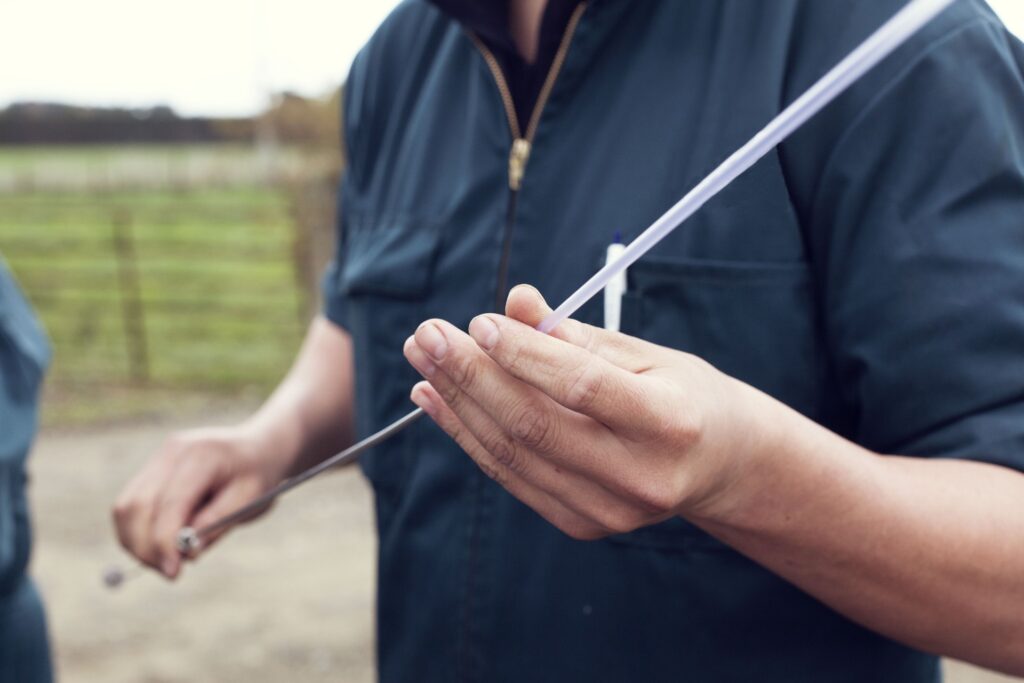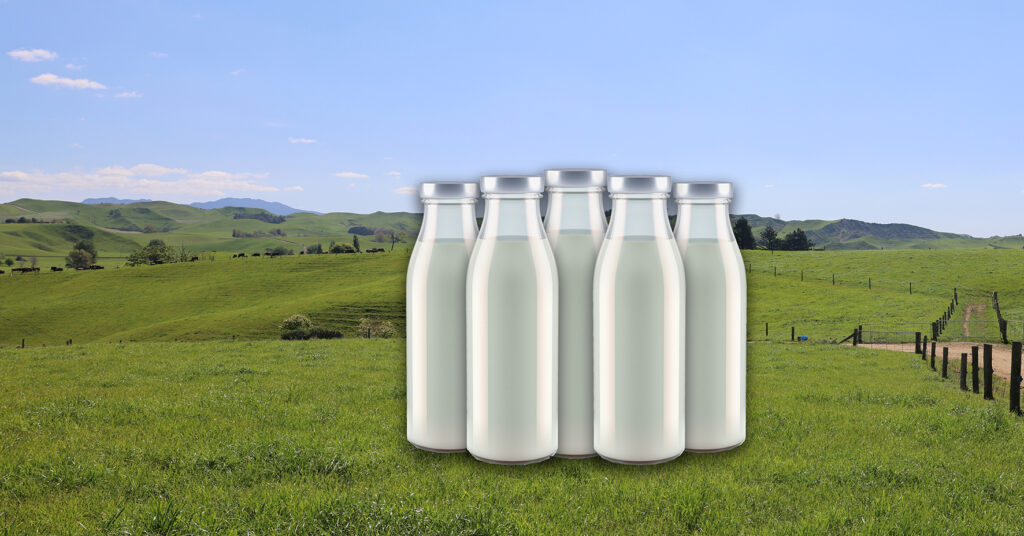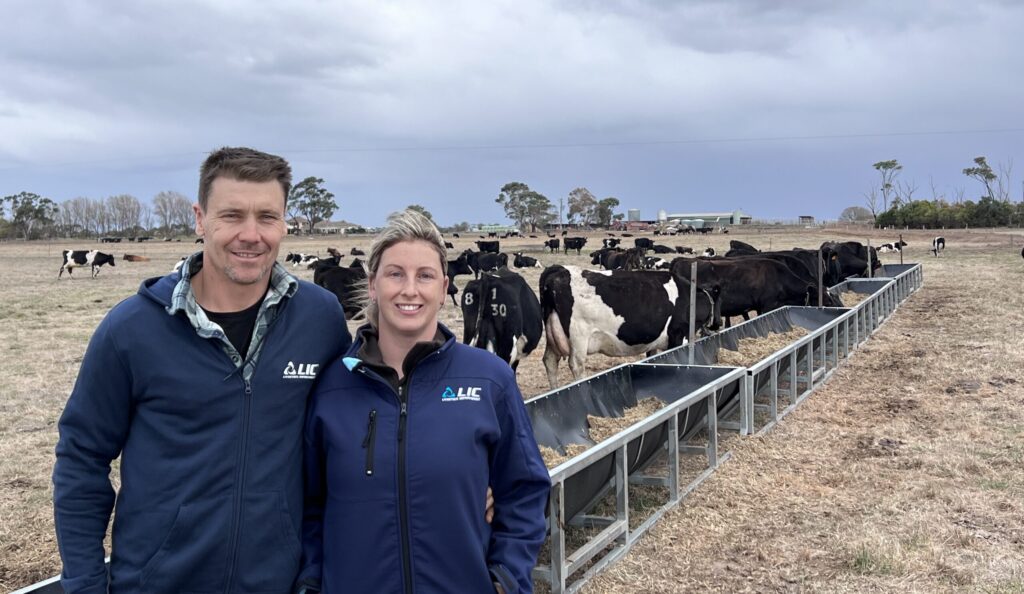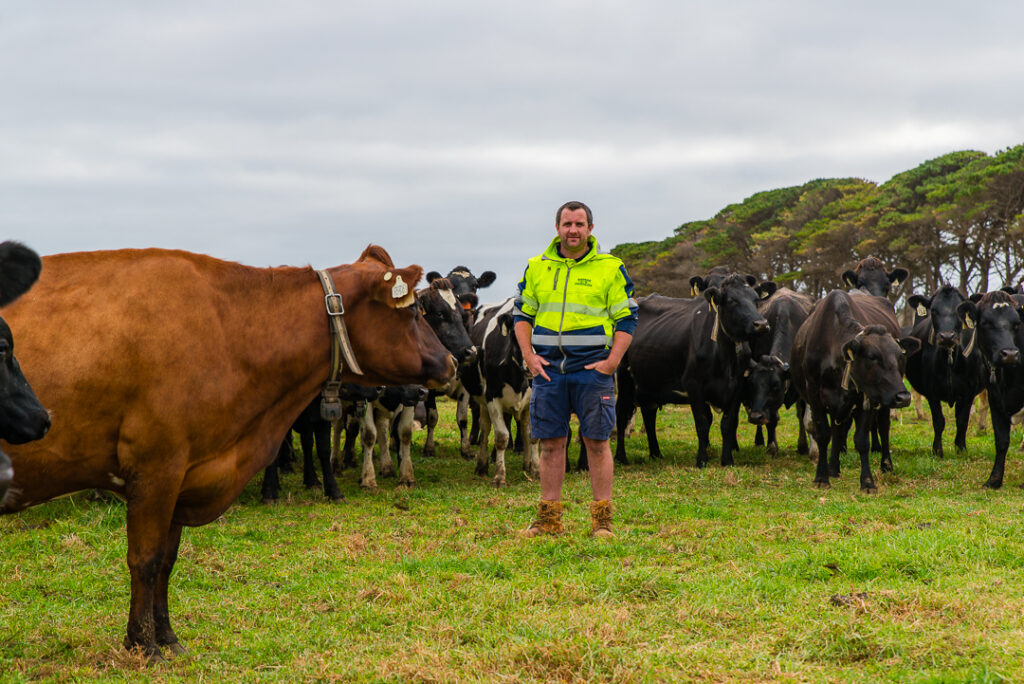Farming in Australia has never been easy. From unpredictable weather to fluctuating milk prices, these pressures demand careful financial planning to make every dollar count. While the challenges aren’t new, history has shown that resilience and smart farming practices remain the key to long-term success.
Past investments in resilient, efficient herds are paying off for farmers today. Their high-genetic-merit, easy-care cows convert feed into profit efficiently and get back in-calf quickly, helping farmers weather current challenges.
While the seasonal challenges faced may be short-term, breeding is a long game. Successful farmers have always remained focused on genetic gain, their herd improvement goals and breeding the right cow for their system.
• the calves entering the herd
• the bulls that sire the next generation
• the cows kept for production and breeding replacements
Herd improvement
Herd improvement begins with selecting the right bulls to produce the best replacement and surplus calves, as determined by the farm breeding objectives.
You can exert significant selection pressure on females through breeding and culling choices, or by selling off surplus calves. However, the biggest genetic impact on your herd comes from the team of bulls you use, because bulls have the greatest influence on the DNA profile of the next generation.
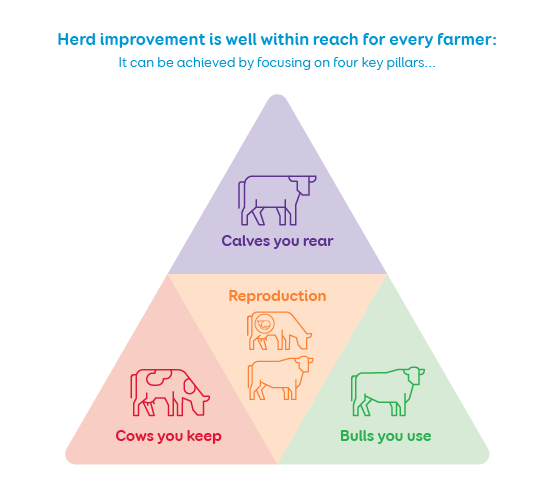
Efficient reproduction underpins the three selection pressure areas in Figure 1. Reproductive performance impacts all three:
• the number of AI heifer calves born
• the number of conceptions from the AI sires used
• the opportunities for cow selection after empty cows are removed.
Capturing reproductive gains can be a real game-changer on some farms.
Efficient, profitable cows are superior in both good and bad years, locking resilience into farm systems.
They set the farm up to tackle both current and future challenges, maximising milk production from their feed inputs. With the right breeding programme, they also produce daughters who will one day outperform themselves. High gBW bulls mated to the right cows will breed high-yielding, efficient replacements.
A recent study of over 1 million 2-8-year-old milk-recorded NZ cows shows the value of gBW on farms, (Table 1). When ranked within herds, there was a 75 kgMS and 173 gBW point average difference between the top and bottom quartile gBW cows.
The highest gBW quartile had a 22% production efficiency advantage over their bottom quartile herd mates, producing 0.16 kgMS/kgLwt more over the lactation period analysed.
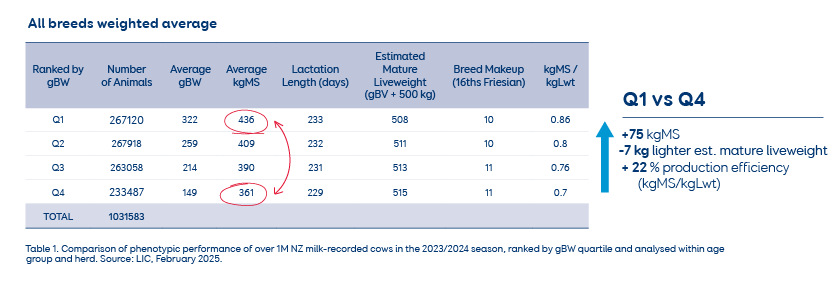
This data highlights the strong relationship between genetic merit and cow performance on commercial farms and the value of investing in high gBW bulls.
You can accelerate your herd’s genetic gain by mating your top-performing cows and your yearling heifers to elite LIC sires for a superior line of replacements. Options for the bottom-end of the herd include short gestation length beef or dairy semen. Using SGL Compact™ dairy sires you can gain more days in milk and have more recovery time for the cows before the next mating period starts. By selecting appropriate SGL Beef sires, you can produce dairy x beef calves that are more valuable in the marketplace.
Even when times are tight, farmers who value herd quality, remain focussed on investing in the very best genetics for their herd. This way, they can reap the ongoing performance benefits of genetic gain in the years ahead, as superior heifers join the herd and continue to produce into their mature years.
Great breeding decisions today will lock in benefits for the future, building on past generations of breeding a resilient, efficient and profitable herd.
How to drive herd improvement
Reproduction practices: Cow condition on target, sound heat detection, time for recovery between calving and mating, excellent AI practices, good cow health, heifers grown well.
The best team of bulls from genomic and daughter proven offerings: The younger generation contain the best genetics and enable farmers to cut down on the generation interval, while the best proven bulls reliably produce highly efficient daughters.
Culling options: Use culling to remove more of the bottom end in the milking herd, improving herd and milk quality.
Yearling matings: The younger generation is the best source of genetics. Mate and breed replacements from them to increase the rate of genetic gain.
Cow selection at mating: Selectively breed AI replacements from your better cows to get a boost in genetic merit in your next generation of calves. For example, breed replacements from the top-80 to top-90% of the herd and put the rest to either beef,
to gain higher value beef-on-dairy calves, or to SGL Compact™ sires to gain more days in milk.
Sexed semen: An average 90% chance of getting a heifer, as opposed to the average chance, from non-sexed semen sitting at 50%, sexed semen allows farmers to target more of their top cows for breeding replacements. Use this strategically in heifers or when mating top cows. Starting with frozen sexed product ahead of the planned start of mating date can help keep the calving pattern tight.
Selection in the calf pen: This depends on having a surplus of calves, and comes back to reproduction. Identify the best calves to rear and those you wish to sell.
